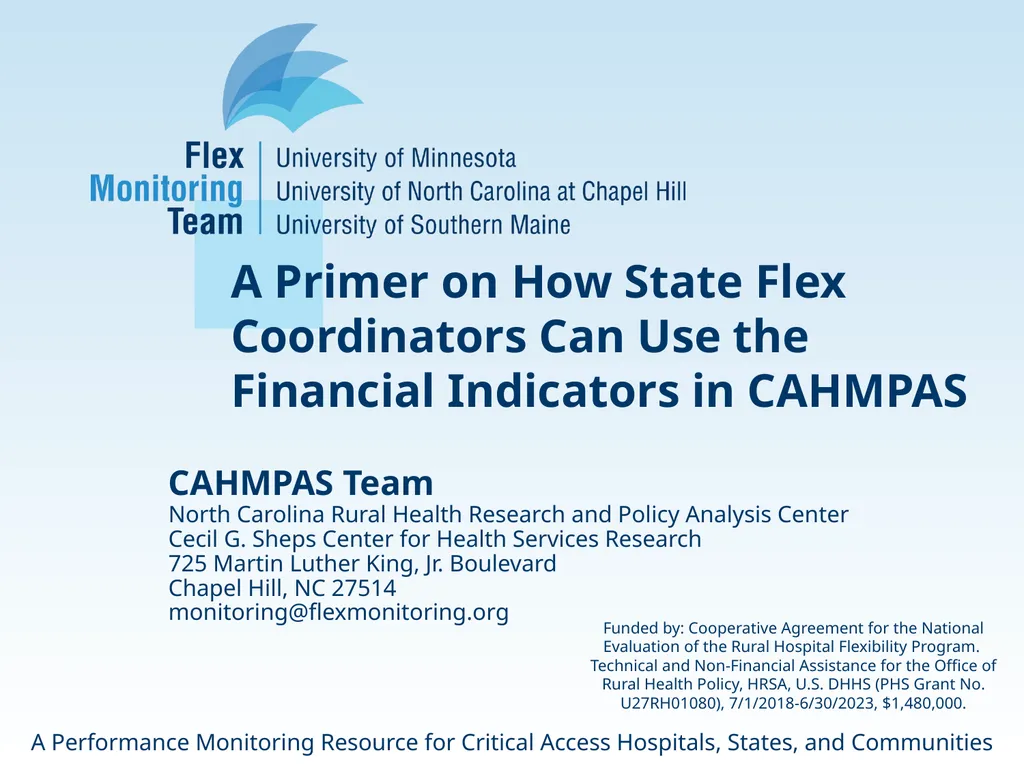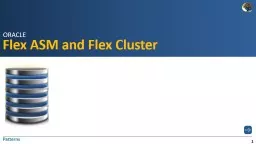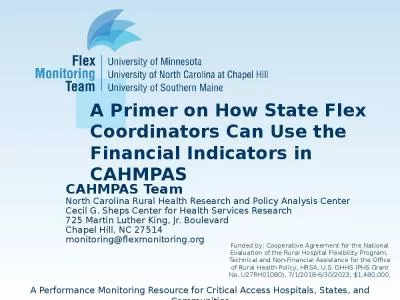A Primer on How State Flex Coordinators Can Use
Author : test | Published Date : 2025-06-27
Description: A Primer on How State Flex Coordinators Can Use the Financial Indicators in CAHMPAS Funded by Cooperative Agreement for the National Evaluation of the Rural Hospital Flexibility Program Technical and NonFinancial Assistance for the
Presentation Embed Code
Download Presentation
Download
Presentation The PPT/PDF document
"A Primer on How State Flex Coordinators Can Use" is the property of its rightful owner.
Permission is granted to download and print the materials on this website for personal, non-commercial use only,
and to display it on your personal computer provided you do not modify the materials and that you retain all
copyright notices contained in the materials. By downloading content from our website, you accept the terms of
this agreement.
Transcript:A Primer on How State Flex Coordinators Can Use:
A Primer on How State Flex Coordinators Can Use the Financial Indicators in CAHMPAS Funded by: Cooperative Agreement for the National Evaluation of the Rural Hospital Flexibility Program. Technical and Non-Financial Assistance for the Office of Rural Health Policy, HRSA, U.S. DHHS (PHS Grant No. U27RH01080), 7/1/2018-6/30/2023, $1,480,000. CAHMPAS Team North Carolina Rural Health Research and Policy Analysis Center Cecil G. Sheps Center for Health Services Research 725 Martin Luther King, Jr. Boulevard Chapel Hill, NC 27514 monitoring@flexmonitoring.org Purpose 2 To highlight the financial indicators in CAHMPAS To describe how Flex Coordinators can use the information to assess the financial performance and condition of CAHs in their state To illustrate how to identify financial strengths and weaknesses for the design of interventions and targeting of Flex funds by Flex Coordinators Contents 1. Introduction to CAHs 2. Overview of CAHMPAS 3. How to measure CAH financial performance using the Indicators 4. How to compare CAH financial performance using peer groups 5. How to evaluate CAH financial performance using benchmarks How SFCs can use the financial indicators in CAHMPAS: an example 7. Limitations 8. What is next? 3 1. Introduction to CAHs 4 Sources of Revenue to CAHs Medicare 73% of inpatient revenue 37% of outpatient revenue Medicaid Commercial payers Self-pay Contributions Grants Local government 5 Legislation Legislation enacted as part of the Balanced Budget Act (BBA) of 1997 authorized states to establish State Medicare Rural Hospital Flexibility Programs (Flex Program), under which certain facilities participating in Medicare can become Critical Access Hospitals (CAH). 6 Differences from PPS CAHs receive Cost Based Reimbursement - 99% of “allowable costs” for Medicare beneficiaries That is, NOT the Inpatient Prospective Payment System (IPPS) and Hospital Outpatient Prospective Payment System (OPPS). A common misconception is that CAHs receive 99% of all costs instead of Medicare costs. 7 Criteria to be a CAH Be located in a state that has established a State Flex Program (as of December 2008, only CT, DE, MD, NJ, and RI did not have such a program); Be located in a rural area or be treated as rural under a special provision that allows qualified hospital providers in urban areas to be treated as rural for purposes of becoming a CAH; Furnish 24-hour emergency care services, using either on-site or on-call staff; 8 Criteria to be a CAH Provide no more than 25 inpatient acute care beds that can be used for














